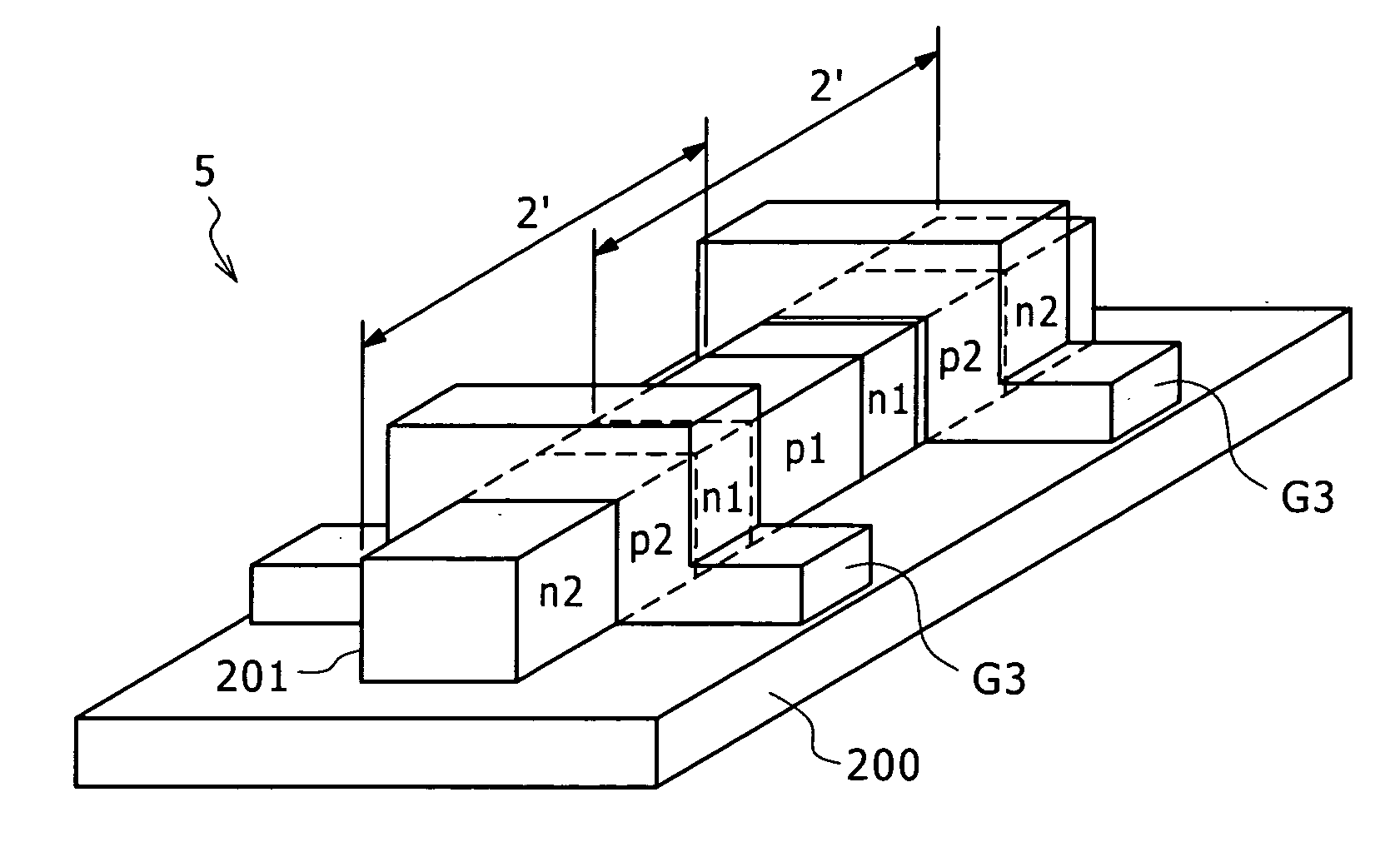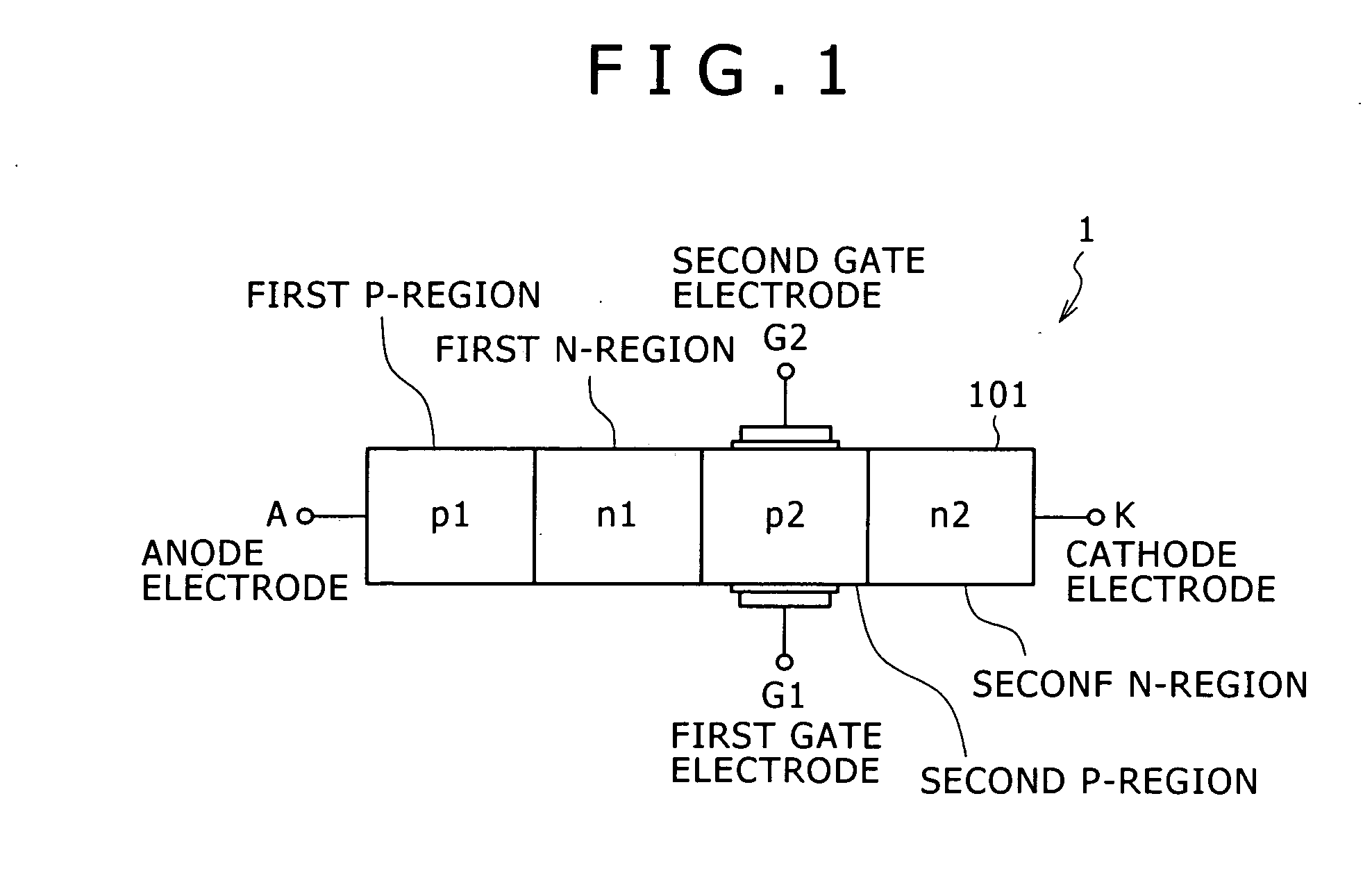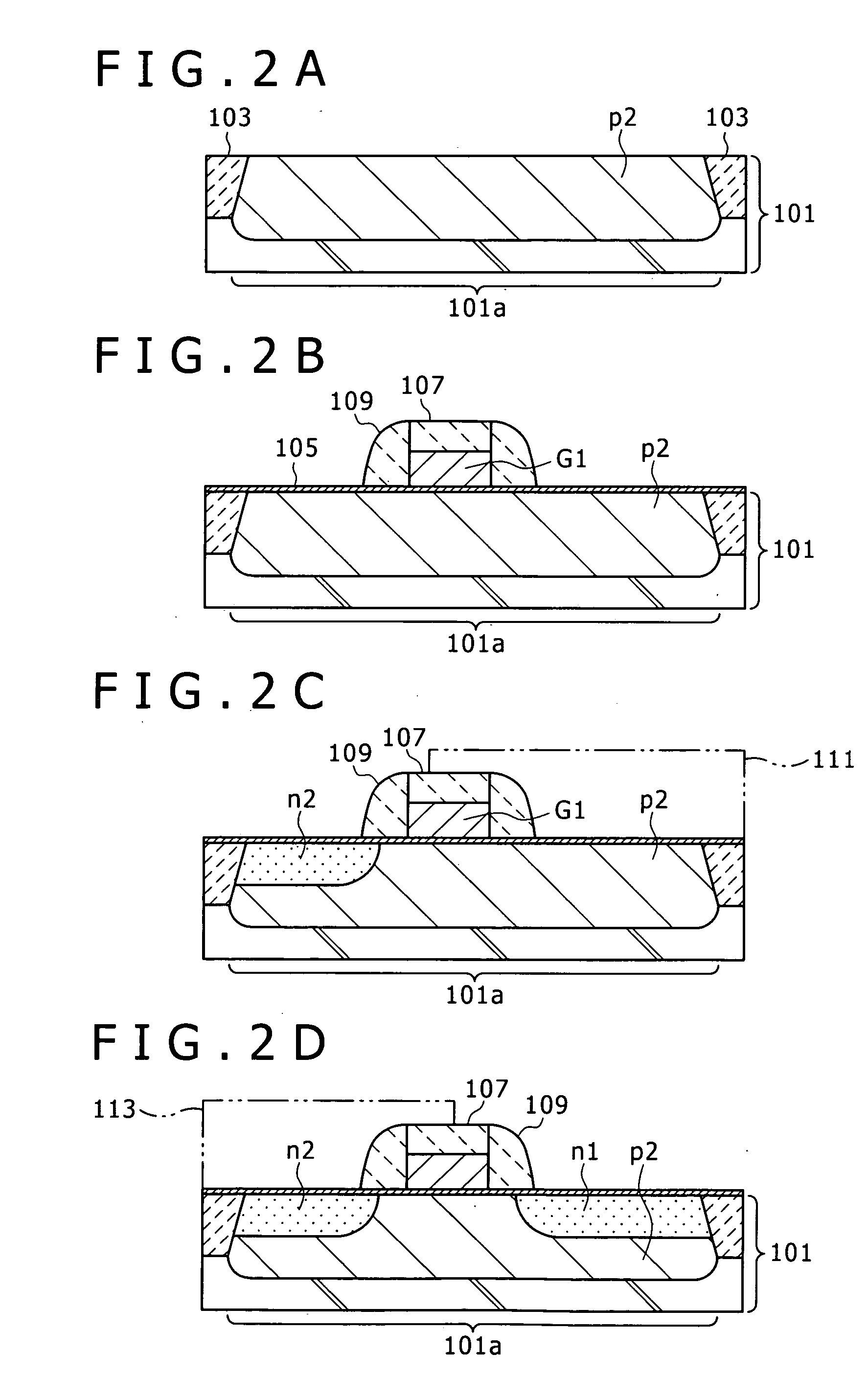Semiconductor device and method for manufacturing semiconductor device
a semiconductor and semiconductor technology, applied in semiconductor devices, diodes, transistors, etc., can solve the problem of taking some time for carriers in the p-region pb>2/b> to be discharged, and achieve the effect of enhancing the speed of switching from the on-state to the effective off-sta
- Summary
- Abstract
- Description
- Claims
- Application Information
AI Technical Summary
Benefits of technology
Problems solved by technology
Method used
Image
Examples
first embodiment
[0035]FIG. 1 is a diagram schematically illustrating the structure of a semiconductor device according to the invention. A semiconductor device 1 shown in FIG. 1 is different from the semiconductor device of the related art described with FIG. 15A, in that gate electrodes G1 and G2 that can be controlled independently of each other are provided over opposed two faces of a p-region p2 formed in an intermediate area of the semiconductor device 1.
[0036] Specifically, the semiconductor device 1 includes a semiconductor layer 101 in which a first p-region p1 (hereinafter, referred to simply as a p-region p1), a first n-region n1 (hereinafter, referred to simply as an n-region n1), a second p-region p2 (hereinafter, referred to simply as a p-region p2), and a second n-region n2 (hereinafter, referred to simply as an n-region n2) are adjacent to each other in that order. Furthermore, an anode electrode A is connected to the p-region p1 at one outermost end, while a cathode electrode K is c...
second embodiment
[0076] A method for manufacturing the semiconductor device 2 of the second embodiment will be described below with reference to step diagrams of FIGS. 4A to 4F.
[0077] Referring initially to FIG. 4A, a semiconductor thin film 201a formed on the insulating film 200 of an SOI substrate is patterned into a ridge shape extending in one direction, to thereby form the semiconductor layer 201 processed into a three-dimensional fin structure. The semiconductor layer 201 serves as an active region.
[0078] Subsequently, the p-region p2 is formed in the entire semiconductor layer 201 through ion implantation. In this ion implantation, the p-type dopant to be introduced for the p-region p2 is e.g. boron (B), and the dose thereof is e.g. 5E18 / cm3, and is preferably about 1E18 to 1E19 / cm3. The p-type dopant may be indium (In).
[0079] Subsequently, the formation of a sacrificial oxide film for eliminating damage on the semiconductor layer 201 and etch-removal of the sacrificial oxide film are carri...
fourth embodiment
[0102] After the above-described step, the insulating film 401 over the offset insulating film 301 and the sidewall 203 are removed by polishing according to need. Alternatively, the insulating film 401 and the sidewall may be left if they are used as interlayer insulating films. In addition, contact holes to the gate electrodes G1′ and G2′, the p-region p1 and the n-region n2 are opened and metal interconnects are provided although not illustrated in the drawings, so that the semiconductor device 4 of the fourth embodiment described with FIG. 6 can be completed.
[0103] In the semiconductor devices of the first to fourth embodiments, the p-region p2 is provided with a gate electrode. However, semiconductor devices of embodiments of the invention may have a structure in which the n-region n1 in an intermediate area is provided with a gate electrode.
[0104] In the manufacturing of the semiconductor devices of the first to fourth embodiments, the formation order of the p-region p1 and t...
PUM
 Login to View More
Login to View More Abstract
Description
Claims
Application Information
 Login to View More
Login to View More - R&D
- Intellectual Property
- Life Sciences
- Materials
- Tech Scout
- Unparalleled Data Quality
- Higher Quality Content
- 60% Fewer Hallucinations
Browse by: Latest US Patents, China's latest patents, Technical Efficacy Thesaurus, Application Domain, Technology Topic, Popular Technical Reports.
© 2025 PatSnap. All rights reserved.Legal|Privacy policy|Modern Slavery Act Transparency Statement|Sitemap|About US| Contact US: help@patsnap.com



